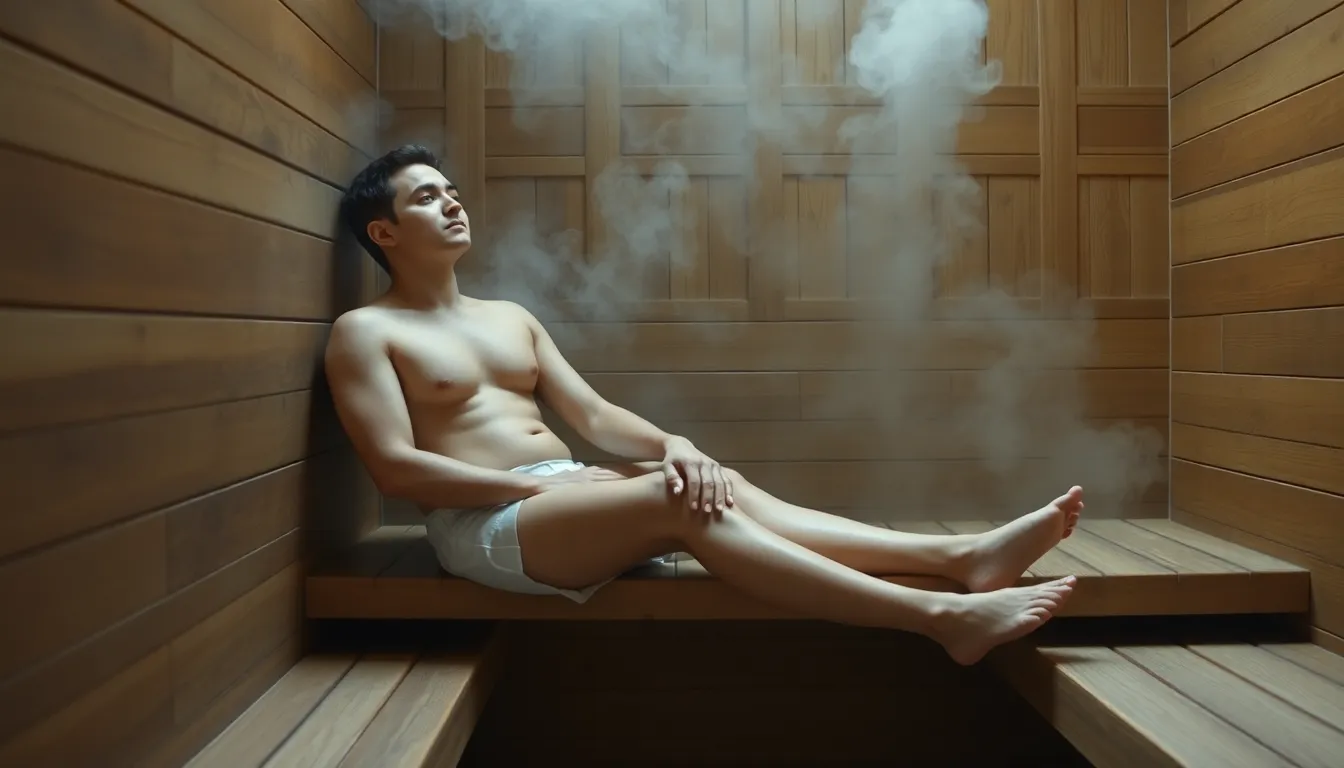Stepping into a sauna feels like entering a warm hug from the universe. But how long should one bask in this steamy paradise? It’s a question that’s puzzled many, as too little time leaves you feeling like you barely dipped your toes in, while too much can turn a relaxing retreat into a sweaty endurance test.
How Long Should You Sauna
Saunas offer numerous advantages for physical and mental well-being. Spending time in a sauna can enhance overall health and relaxation.
Physical Health Benefits
Enhancing circulation occurs with regular sauna use. Increased blood flow promotes oxygen delivery to muscles and organs. Sweating helps remove toxins, leading to improved skin health. Sauna sessions can aid muscle recovery after workouts, reducing soreness. Additionally, studies indicate a correlation between regular sauna use and lower blood pressure, which benefits cardiovascular health.
Mental Health Benefits
Relaxation occurs during sauna sessions, significantly reducing stress levels. Regular use may lower anxiety, promoting a sense of calm. Saunas often encourage social interaction, enhancing connections with others. Some research suggests that it may reduce symptoms of depression, contributing to overall happiness. Moreover, heat exposure can improve sleep quality, leading to better mental clarity and focus.
Recommended Sauna Duration

Finding the optimal duration for sauna use ensures a balance between benefits and comfort. Staying in a sauna too short limits potential health benefits, while excessive time can lead to discomfort.
General Guidelines
Begin with sessions lasting 5 to 10 minutes, especially for newcomers. Gradually increase time to 15 to 20 minutes as the body adjusts. Aim for a maximum of 30 minutes in a single session for optimal safety. It’s crucial to listen to the body; if feeling dizzy or unwell, exiting immediately is imperative.
Factors Influencing Duration
Several factors influence sauna duration. Individual tolerance plays a significant role, as some adapt quickly while others require longer acclimatization. Health conditions, such as cardiovascular issues or dehydration, also dictate how long a person should remain. Ambient temperature significantly impacts comfort levels; higher temperatures can warrant shorter durations. Finally, hydration status before entering the sauna can affect endurance.
Safety Considerations
When using a sauna, it’s essential to prioritize safety. Staying aware of one’s own body signals greatly enhances the sauna experience.
Signs of Overuse
Dizziness often indicates too much time spent in the sauna. Products of high heat, such as excessive sweating, can lead to dehydration. If a person feels faint or lightheaded, they should exit immediately. Irritation of the skin may also arise, signaling that time in the sauna exceeds comfortable limits. Signs like nausea or headache can suggest overheating or dehydration, warranting immediate attention. Observing these symptoms helps maintain a safe sauna experience.
Hydration Tips
Hydration plays a crucial role in sauna safety. Drinking water before entering the sauna ensures proper fluid levels. Staying hydrated throughout the session supports tolerance and overall comfort. It’s advisable to consume water both during and after sauna use, replenishing fluids lost through sweat. Electrolyte drinks aid in restoring essential minerals, especially after prolonged sessions. Increasing fluid intake before and after enhances recovery and supports well-being. Prioritizing hydration leads to a more enjoyable sauna experience without the risks associated with dehydration.
Best Practices for Sauna Use
Following best practices enhances the sauna experience, making it safer and more beneficial.
Pre-Sauna Preparation
Preparation for a sauna session is essential. Hydration plays a key role; drinking water before entering prevents dehydration. Taking a shower beforehand helps cleanse the skin and open pores. Comfortable attire also contributes to relaxation; wearing lightweight, breathable clothing facilitates better heat absorption. If a person has existing health conditions, consulting a healthcare provider offers personalized guidance. Mental readiness further enhances the experience; focusing on relaxation prepares the mind for the heat.
Post-Sauna Care
Post-sauna care ensures recovery and comfort. Cooling down gradually is important; stepping out into a cooler environment helps stabilize body temperature. Rehydrating after the session replenishes lost fluids; drinking water or electrolyte-rich beverages aids in recovery. Showering helps rinse the body of sweat, promoting skin freshness. Resting for a while aids in rebalancing energy levels; avoiding strenuous activities post-sauna ensures the body has time to adjust. Maintaining a healthy snack can also provide necessary nutrients, supporting overall well-being.
Conclusion
Finding the right sauna duration is essential for maximizing its benefits while ensuring safety. By starting with shorter sessions and gradually increasing the time, individuals can discover their comfort level. Listening to the body is crucial; it’s important to exit the sauna at the first signs of discomfort.
Staying hydrated before, during, and after sauna use enhances the experience and promotes recovery. With proper preparation and care, sauna sessions can become a rejuvenating part of a wellness routine. Ultimately, the key is to enjoy the warmth while prioritizing health and well-being.


